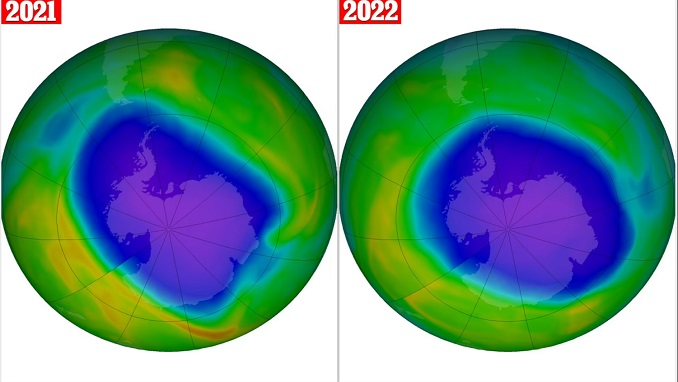
According to a new United Nations-backed assessment, the Earth’s ozone layer, which protects the planet from harmful ultraviolet rays, is on track to recover completely within decades as ozone-depleting harmful chemicals are phased out across the world.
In rare good news for the planet, the ozone layer is expected to recover for most of the world to 1980 levels by 2040 if global policies stay in place whereas the timeframe for recovery is longer for polar areas: 2045 over the Arctic and 2066 over the Antarctic.
Scientists have sounded the alarm about a hole in this protective shield around the Earth since the late 1980s, pointing out that it is caused by ozone-depleting substances including chlorofluorocarbons (CFCs), which are often found in refrigerators, aerosols, and solvents.
Since the Montreal Protocol – which began the phase-out of those and other ozone-harming chemicals – went into force in 1989, the use of CFCs has decreased by 99%, according to the assessment by a panel of experts published on Monday, and international cooperation also helped stem the damage.
Albeit better than in the early 2000s, ozone depletion was significantly worse than in 2019. NOAA and NASA scientists reported that the formation of a large and deep Antarctic ozone hole in 2020 – which is likely to persist into November- was supported by persistent cold temperatures and strong circumpolar winds.
The annual ozone hole reached its peak area at 24.8 million square kilometers – roughly three times the size of the continental US- on September 20, 2020. At the same time, ozone was near complete elimination for several weeks near the geographic South Pole, in a 6 km high column of the stratosphere.
Per the Secretary-General for the World Meteorological Organization, Petteri Taalas, the success accomplished in phasing out harmful chemicals shows what can and must be urgently done to reduce greenhouse gases and transition away from fossil fuels in order to limit temperature increase.
And according to a 2021 study in the journal Nature, the world could’ve seen additional warming of up to 1 degree Celsius without banning ozone-depleting gases, which are also potent greenhouse gases.




Be the first to comment